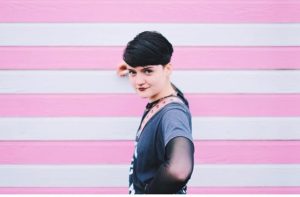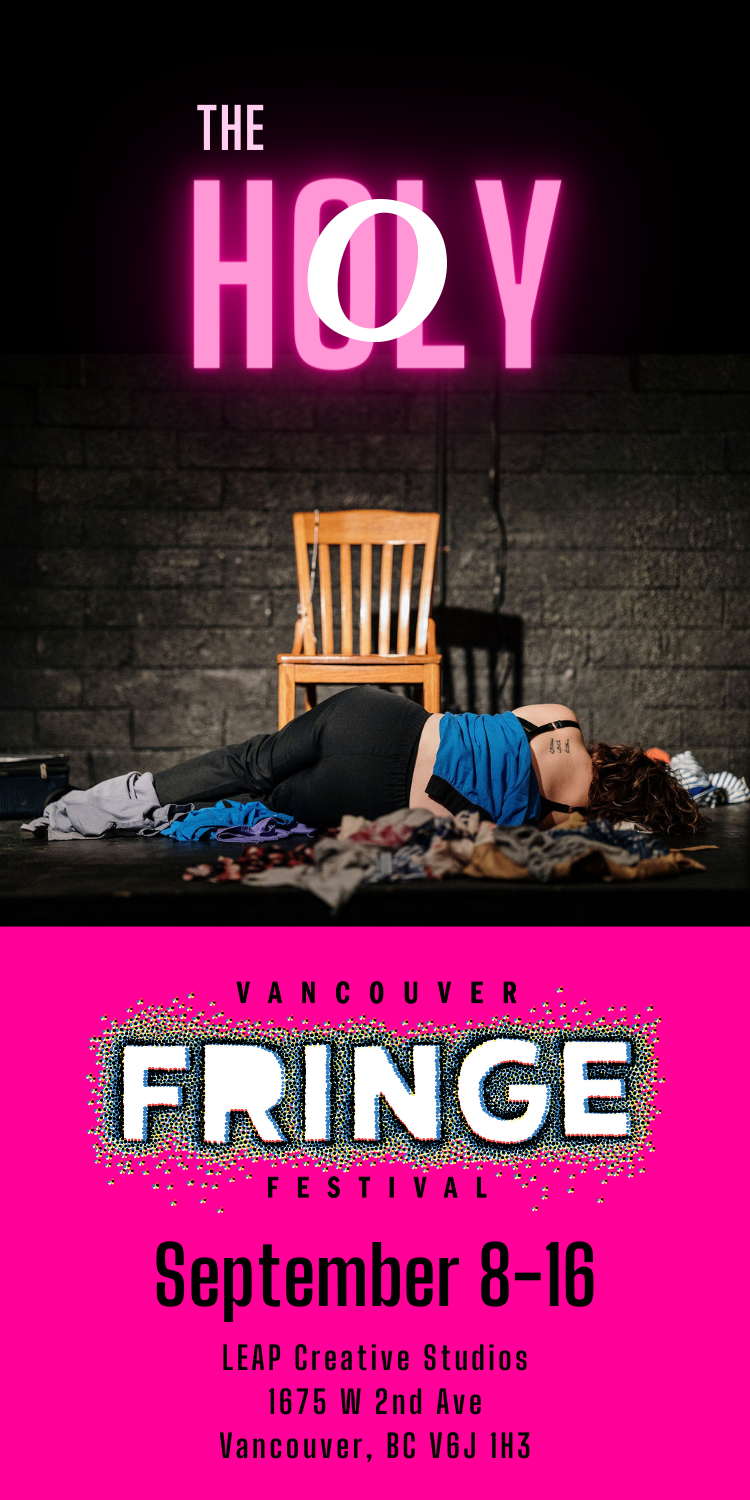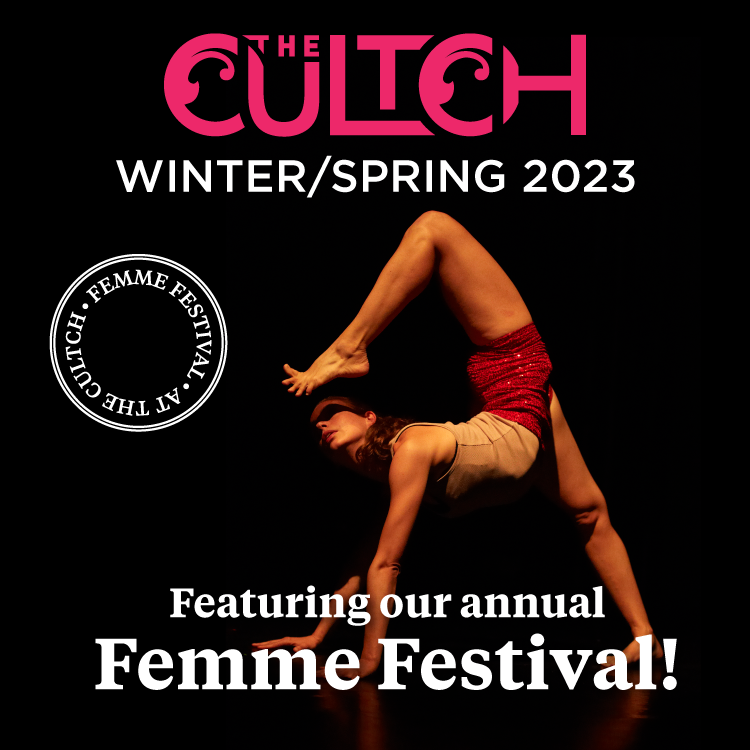Photography by Avery Holliday
By Elizabeth Holliday
@femme.path// @dank.is.a.drag
Dank. It’s a word that evokes a variety of images: dampness, coolness, weed. When I chose Dank Sinatra for my drag name, I didn’t realize I was electing to be introduced as and referred to as “Dank” by total strangers and soon-to-be-friends, whether in or out of drag. Sometimes shuffled around with my birth name, sometimes exclusively. I’ve come to understand it as a signifier; it is both a nickname and not, refers to someone that I have made up, but that also exists in me; it is a connection to those in my community and a statement of individuality. I couldn’t have foreseen the permanence of the name when I started doing drag ten months ago. But there’s a lot I didn’t foresee. You can never really be prepared for what drag will give you.
By the beginning of 2018, I had been circulating around the Vancouver drag scene for a while. Having come out as bisexual at 22, I had spent a few years doing the dance of entering queer spaces while riddled with brutal insecurity in them. In the exciting and bewildering newness of queer shows and dance parties, I was struck by the familiarity of drag, how akin it was to the kind of theatre performance in which I was well-versed, but with way less rules, less oversight, and kinds of gender-bending I didn’t know existed. Here, I was made privy to an expansive culture of drag, gender, and performance that included women, trans, and non-binary folks. There is something particularly incredible about seeing folks who have lived in marginalized bodies taking a stage, fucking with normative gender and sexuality (and everything else), and being adored for it. As I became exposed to more Drag Queens, Kings, and Things, I was invited to see that if drag is gender play, then there’s a whole toolbox of gender signifiers and experiences that can be mobilized by anyone, in, around, and wildly outside the binary. It was theatre, gender, and social justice rolled up in one, and I was in love.

My first time in drag outside of the house was a disaster; I walked through the day blinded by nervousness only to have the show cancelled when the block’s power went out, immediately before I was slated to take the stage. My second time was no less terrifying, but significantly more successful. On a Mother’s Day I am still apologizing to my mother for, I made it on the stage and through a number. Although I blacked out from fear for that less-than-three-minute rendition of Cindy Bullens’ “It’s Raining on Prom Night,” the rush when it was over was nothing short of incredible.
When I tell people I do drag, the initial reaction is usually positive yet confused. Despite the diversity of gender expression within the drag community, the popular conception of drag is firmly associated with cis-men dressing as women. To explain where I fit in the drag spectrum, I start with the familiar idea of the Drag Queen: someone who does drag to inhabit normatively female characteristics and then I introduce the concept of the Drag King–someone who does drag to inhabit normatively male characteristics. And then, I get into Drag Thing, the title I prefer. My drag is not strictly “male,” but runs a wide gamut of gender expression and play, and varies widely depending on the number, mood, and moment. Drag allows me access modes of both masculinity and femininity that I’ve wanted to inhabit. For me, it feels uniquely tuned to the expression of my sexuality, as I can embody characteristics of those that first awoke me to my own self, and the people I wanted simultaneously to be and be with: David Bowie, Freddie Mercury, Ola Salo, Prince. Marlene Dietrich and Marlon Brando rolled up in one. Before my debut, I had settled on the name Dank Sinatra for multiple reasons. Most of the early songs on my drag playlist were from the 50’s, emerging from a desire to channel a glamour and style of crooner sexuality. But I had also realized that, as much as I had loved Frank Sinatra growing up, he was in actuality a violently-tempered and abusive man. Taking his name was my way of refashioning him for myself, embracing the parts that I wanted and leaving the rest behind.
The ability to channel and refurbish influences and experiences is one of the ways drag hooked me. There is a creativity in East Van drag shows that I had never seen before, largely owing to the bevy of gender nonconforming talent that congregates in these spaces. Performances at shows like Commercial Drag and Man Up gave me the overwhelming sense that everyone’s drag persona and the numbers they present are something that nobody else can do. It is, or can be, a uniquely self-created melding of the personal and political. I come back to Amrou Al-Kadhi’s essay on Ru Paul’s Drag Race, on how the idea of drag as perfectable, competitive, and populated exclusively by cisgendered men eschews the joyous messiness and fierce community centre of drag communities. There is incredible variety and creativity in our communities that would be impossible without drawing from our authentic experiences, our senses of humour, and our diverse experiences of gender and sexuality. That authenticity makes our performances not only unique, but better.

Like anything else, drag comes with its challenges. As with all of Vancouver’s arts scenes, you generally spend more money than you’re ever compensated with, and I have yet to be free from debilitating pre-performance nerves. But my biggest challenge has concerned my mental illness. Starting to do drag has ushered me into a nightlife and social media culture for which I often lack the capacity, providing fodder for many an anxious spiral. With anxiety, depression, and PTSD that make a large social scene and after-hours activities difficult to engage in, I struggle to feel like I fit. But it is always the artistic output of the community, as well as their love and support, that propels me onward. Mental illness is not uncommon in queer communities, and lucky for me, the one I have found is full of some wonderful and compassionate weirdos, making it easier to feel like my eccentricities have a place. In many ways, it has enabled me to have more self-compassion for how my brain functions. As much as drag can trigger my anxieties, pushing myself through these spells has also improved my ability to handle them.
Starting drag can bring up many things for a person. It asks you to grapple with aspects of your identity in unexpected and sometimes complicated ways. It creates a shift. Maybe even a rebirth. The advice, pep talks, jokes, and inspirations of my drag family and friends have been essential to this process for me, a process which is still ongoing. Drag has changed me and challenged me, and will continue to. But it has also made me up for the challenge.

Elizabeth is a writer, actor, and full-time nerd living on Unceded Coast Salish Territories. With a BA in Gender, Race, Sexuality, and Social Justice, she is passionate about media that challenges norms, beliefs, and mainstream representation. You can find her listening to true crime podcasts and trying to find good places to dance (she’ll take recommendations).




